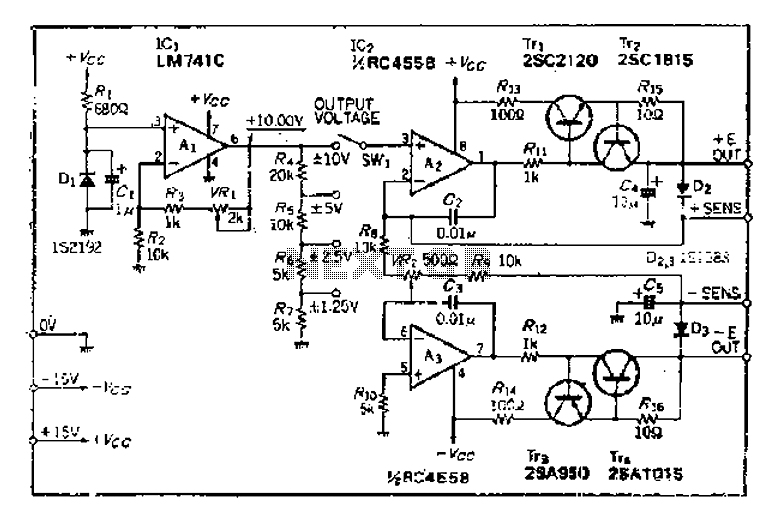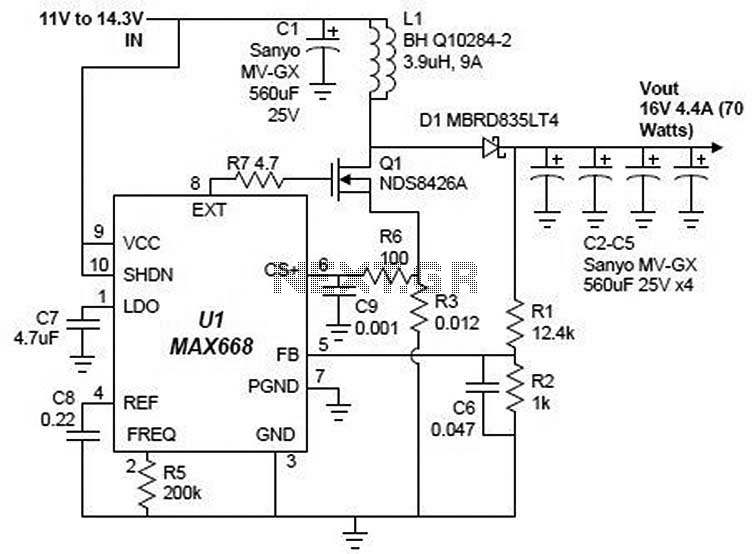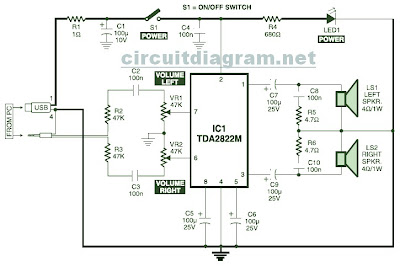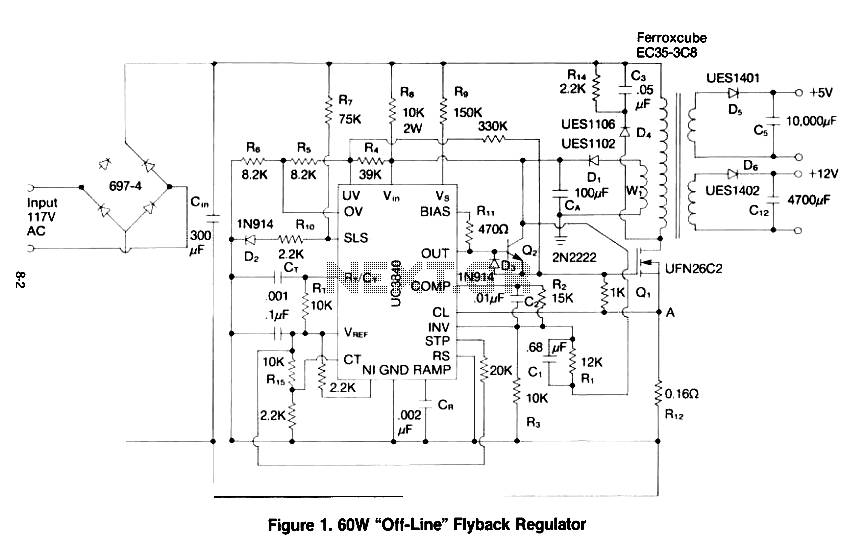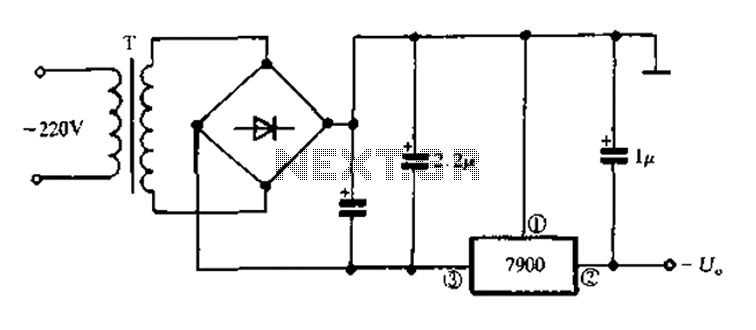
Output sampling winding isolated switching power supply
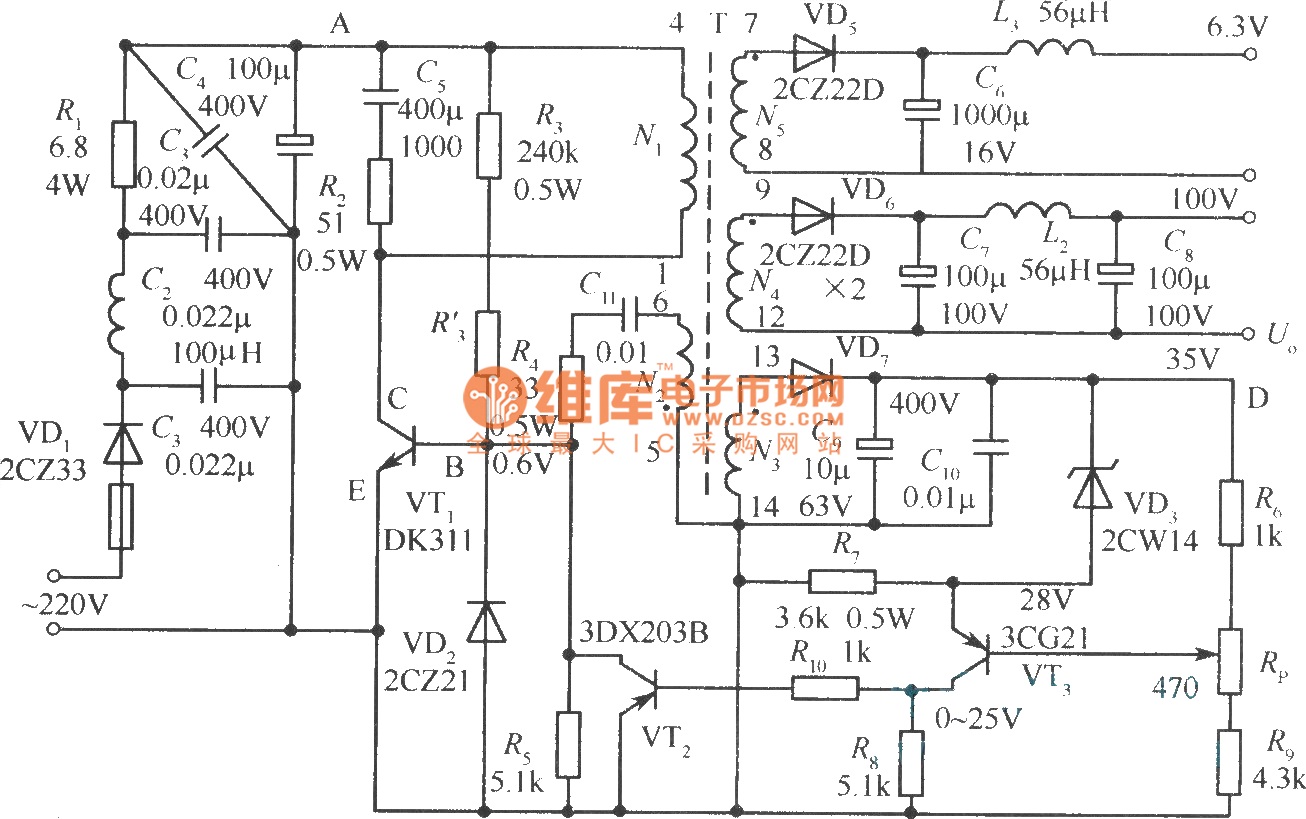
The diagram illustrates the output sampling winding of an isolated switching power supply. In the diagram, T represents a high-frequency transformer; N2 denotes the self-oscillation positive feedback winding; N3 is the error amplifier; VTS is the winding that provides the sampling signal; and N4 and N5 are the DC output windings. The DC output and the power grid are isolated from one another due to the presence of N3, N4, and N5.
The isolated switching power supply operates by utilizing a high-frequency transformer (T) to transfer energy while maintaining electrical isolation between the input and output. The transformer is designed to operate at high frequencies to reduce the size and weight of the components involved, allowing for a more compact design.
The self-oscillation positive feedback winding (N2) plays a crucial role in initiating and maintaining oscillation within the power supply. This feedback mechanism ensures that the switching frequency remains stable and that the system responds adequately to varying load conditions.
The error amplifier (N3) monitors the output voltage and provides feedback to regulate the output. By comparing the sampled output voltage with a reference voltage, the error amplifier adjusts the duty cycle of the switching signal, ensuring that the output voltage remains within specified limits. This feedback loop is essential for maintaining voltage stability and efficiency.
The sampling signal is derived from the winding VTS, which captures a portion of the output voltage. This sampled signal is used by the error amplifier to make real-time adjustments to the switching operation, enhancing the overall performance of the power supply.
The DC output windings (N4 and N5) are responsible for delivering the regulated DC voltage to the load. The isolation provided by the transformer allows for safe operation, as it separates the high-voltage input from the low-voltage output, minimizing the risk of electrical shock and ensuring compliance with safety standards.
In summary, the diagram represents a sophisticated isolated switching power supply that employs a high-frequency transformer, feedback mechanisms, and sampling techniques to achieve efficient and stable voltage regulation while ensuring electrical isolation between the input and output stages.The diagram shows the output sampling winding isolated switching power supply. In diagram, T is high frequency transformer; N2 is self-oscillation positive feedback winding; N3 is the error amplifier, and VTSis thewinding to provide sampling signal; N4, N5are DC output windings. DC output and the power gridare isolated from each other, because N3, N4, N5.. 🔗 External reference
The isolated switching power supply operates by utilizing a high-frequency transformer (T) to transfer energy while maintaining electrical isolation between the input and output. The transformer is designed to operate at high frequencies to reduce the size and weight of the components involved, allowing for a more compact design.
The self-oscillation positive feedback winding (N2) plays a crucial role in initiating and maintaining oscillation within the power supply. This feedback mechanism ensures that the switching frequency remains stable and that the system responds adequately to varying load conditions.
The error amplifier (N3) monitors the output voltage and provides feedback to regulate the output. By comparing the sampled output voltage with a reference voltage, the error amplifier adjusts the duty cycle of the switching signal, ensuring that the output voltage remains within specified limits. This feedback loop is essential for maintaining voltage stability and efficiency.
The sampling signal is derived from the winding VTS, which captures a portion of the output voltage. This sampled signal is used by the error amplifier to make real-time adjustments to the switching operation, enhancing the overall performance of the power supply.
The DC output windings (N4 and N5) are responsible for delivering the regulated DC voltage to the load. The isolation provided by the transformer allows for safe operation, as it separates the high-voltage input from the low-voltage output, minimizing the risk of electrical shock and ensuring compliance with safety standards.
In summary, the diagram represents a sophisticated isolated switching power supply that employs a high-frequency transformer, feedback mechanisms, and sampling techniques to achieve efficient and stable voltage regulation while ensuring electrical isolation between the input and output stages.The diagram shows the output sampling winding isolated switching power supply. In diagram, T is high frequency transformer; N2 is self-oscillation positive feedback winding; N3 is the error amplifier, and VTSis thewinding to provide sampling signal; N4, N5are DC output windings. DC output and the power gridare isolated from each other, because N3, N4, N5.. 🔗 External reference
Warning: include(partials/cookie-banner.php): Failed to open stream: Permission denied in /var/www/html/nextgr/view-circuit.php on line 713
Warning: include(): Failed opening 'partials/cookie-banner.php' for inclusion (include_path='.:/usr/share/php') in /var/www/html/nextgr/view-circuit.php on line 713
